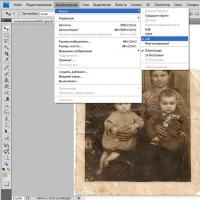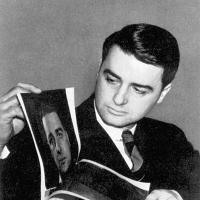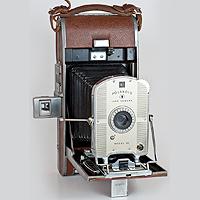Motor transport equipment. List of qualifications and positions. Factors of using different types of transport
Qualification characteristics of the bachelor of the specialty 5В071300 - "Transport, transport equipment and technologies"
A bachelor of this profile is prepared for activities in the field of material production, which includes a set of means, methods and methods of human activity aimed at solving complex problems related to the design, operation and repair of transport equipment.
2. Objects of professional activity
The objects of professional activity of graduates are: machine-building plants that produce transport vehicles and equipment; enterprises and organizations operating transport equipment; design, engineering and technological organizations; machine repair enterprises; brand and dealer centers of machine-building and repair plants; marketing and forwarding services; logistics systems, transport management services.
3. Subjects of professional activity Subjects of professional activity are:
Transport machinery and equipment; power equipment; running equipment; working equipment; transport equipment drive systems; traffic control systems; life support systems;
Equipment for the manufacture, testing and disposal of transport equipment;
Equipment for maintenance and repair of transport equipment;
Control and measuring devices for the manufacture and operation of transport equipment;
Equipment for automation of work processes of transport equipment.
4. Types of professional activity
A bachelor in the specialty 5В071300 - "Transport, transport equipment and technologies" can perform the following types of professional activities:
Organizational and technological activities:
Development of design, technological, design and estimate documentation for the creation and repair of transport equipment;
Compromise solutions taking into account different requirements (cost, quality, deadlines and safety) for different types of planning and determination of optimal solutions;
Accounting for various types of costs in order to ensure the release of quality products.
Production and management activities:
Optimization of manufacturing technologies for transport vehicles and equipment;
Quality control of technological processes, materials and finished products;
Selection and effective use of materials, equipment and other means for the implementation of production processes;
Carrying out measures for standardization and certification of transport technology and equipment, technology for their manufacture and repair;
Organization and management of services, enterprises related to the operation and repair of transport equipment.
Project activities:
Determining the goals and objectives of the project, taking into account various factors when building the structure of their relationships and identifying priority areas for solving problems;
Development and analysis of options for solving problems of forecasting consequences, planning and implementation of projects;
Development of projects of machines and equipment, taking into account technological, design, aesthetic, economic and other parameters;
5. Functions of professional activity
The bachelor in his professional activity performs the following functions:
Carrying out work on the preparation of technical documentation and established reporting in accordance with approved forms;
Conducting training and briefing on safety, labor and environmental protection;
Monitoring the fulfillment of requirements for the preparation of documentation for the quality management of transport equipment.
6. Typical tasks of professional activity
The bachelor must be prepared for the following types of problems:
Technical and detailed design of units and parts of transport equipment;
Carrying out tests of transport equipment and its elements for reliability according to standard methods;
Development of standard technological processes for the manufacture of blanks, parts, assembly of transport equipment units;
Production management at the level of production areas of transport enterprises;
Technological support of the existing production;
Technical design of means of automatic control of transport vehicles and equipment based on standard solutions;
Testing of automation equipment according to standard methods;
Development of vibration isolation systems for transport equipment and noise protection;
Analysis of the reliability and durability of transport equipment.
improvement of the design of transport vehicles and equipment;
Comprehensive mechanization and automation of transport equipment and technological processes;
Establishment and maintenance of optimal operating modes for transport vehicles and equipment.
participation in:
Organization and management of services of industrial transport enterprises;
Development of structures for production and technology, service and maintenance, installation and commissioning and design departments;
Creation and improvement of transport technology and equipment.
9. Requirements for key competencies of a bachelor in the specialty 5В071300 - "Transport, transport engineering and technology" bachelor must
have an idea about (about):
The main scientific and technical problems and prospects for the development of transport technology in conjunction with related fields of technology;
The main trends in changes in the operating conditions of transport equipment;
The economic foundations of production;
Methods for studying the state and demand for services in the transport market;
Taxation;
Methods of technical and economic analysis and engineering and management decisions;
Legal and legislative framework for financial relations;
Fundamentals of Management and Marketing; know:
Basics of comparison and evaluation of transport equipment;
Target-programmed methods and methods of using them in the analysis and improvement of production;
Transport equipment design;
Fundamentals of legislation and regulatory framework of the industry;
Market economy fundamentals;
Methods for engineering calculations and making engineering and management decisions;
Basics of certification and licensing of enterprises, service personnel;
Materials used in the construction of transport equipment and their properties;
Properties and features of the use of alternative fuels;
Design features of transport equipment using alternative fuels;
The state and directions of the use of scientific achievements in professional activities;
Methods of work and communication with personnel, selection and placement of personnel;
be able to:
To highlight program-targeted methods of analysis of technical, technological, organizational, economic and social issues;
Use advanced industry, cross-industry and foreign experience;
Determine the features of the conditions for the design, manufacture, operation and operating modes of transport equipment;
Apply data from the analysis of mechanisms of wear, corrosion, loss of strength of structures;
Use legislative acts and technical standards in force in transport, including traffic safety, working conditions, environmental issues;
Rely on the socio-psychological foundations of team management;
have skills:
Computer work;
Use of research methods and instruments;
Application of the main regulatory documents for the operation of transport machinery and equipment;
Use of metrological rules and regulations;
Possession of methods of technical control in the conditions of existing production;
Rational methods of searching and using scientific and technical information;
Organization of safe working conditions and elimination of accidents; be competent:
In the field of interaction between transport and other related industries;
In the design, the choice of rational modes of operation and repair of transport vehicles and equipment;
In the field of labor law.
Transport equipment includes (Fig. 4):
Path (as a structural element);
Vehicles (rolling stock);
Technical means of mechanization and automation of loading and unloading processes and transport and storage operations;
Computerized customer service systems;
Means of mechanization of processes in the transport infrastructure.
Rice. 4. The composition of transport equipment.
Way ... Each type of land transport has its own path, laid on the surface of the earth. A strip of terrain is set aside for the track and construction of railways, automobile roads, and other roads.
Between the rolling stock of terrestrial species and the surface of the earth, there is always some bearing surface on which movement occurs.
Transport means: classification, structure, features.
Their classification according to various criteria is as follows:
By type of transportation: cargo, passenger, cargo-passenger, technological;
By distance of transportation: mainline, local;
By the type of energy supply: with an autonomous energy source and with a centralized one (electric transport, pipeline transport);
By the type of energy used: chemical, electrical, nuclear, wind, solar;
By the type of support suspension: wheeled, caterpillar, air support, water support, winged, roller, rope, magnetic.
The vehicle includes:
Autonomous control systems;
Transport medium;
Systems for ensuring the functioning of the vehicle;
Power plants.
Autonomous vehicle control systems are designed to control the vehicle movement according to a given program and include the following subsystems:
Controlling the parameters of a moving vehicle in space;
Diagnostics of the state of structural elements (t 0 water, oil, tire pressure, etc.);
Traction control;
Steering;
Brake control;
The vehicle carrier is a supporting structure designed to accommodate all systems.
The systems for ensuring the functioning of the vehicle are designed to ensure the functional purpose of the vehicle and include:
Devices and equipment for accommodating passengers and cargo;
Household equipment;
Technological equipment.
Energy (power) installations are designed to ensure the movement of the vehicle, as well as to supply it with heat, electricity and include:
Engines (internal combustion engine, turbine, etc.);
Mover (wheeled, tracked, etc.);
Devices for supplying the vehicle with heat, electricity.
The interaction of all these systems ensures that the vehicle performs its functional purpose, which is quantitatively reflected by its technical characteristics.
Vehicles : characteristics and indicators.
A quantity that quantitatively characterizes the performance of an object of its functional purpose is called its technical characteristic. The main technical characteristics of the vehicle are measured by the product of the cruising speed V R on the useful weight of the transported cargo m T .
The transport speed is indicated by V [km / h; m / s] with an index corresponding to the type of registered speed. The main types of speed:
Technical speed V T - the path traversed by the vehicle relative to the supporting environment of the transport space per unit of time;
Ground speed V NS is the vector sum of the technical speed and the speed of movement of the supporting medium W ; if the distance traveled by the vehicle is L , km, and the time of its movement t n, h , then the average ground speed V NS = L / t NS ;
Cruising speed V R - distance ratio L R between end points
dispatch and arrival (distance of transportation) by the time of delivery of cargo or passengers:
V R = L R / (t NS +? (a T T i )) (1)
where t NS - time of movement of the vehicle along the transport route, h; a T - the number of technological operations in the transportation process (registration of travel documents, loading and unloading, vehicle stops); t i - duration i -th technological operation, h.
Considering that L R / t NS = V NS , equation (1) can be written as follows:
V R = V NS T NS / (t NS +? (a T T i )) (2)
Ratio t NS / (t NS +? (a T T i )) = ? NS is called the coefficient of efficient use of the time of the transportation process, and then V R = ? NS V NS , wherein V R ‹V NS .
The formula for the hourly productivity of the vehicle [tkm / h] can be written as follows:
NS T = ? NS V NS M T ., (3)
The mass of the transported cargo.
The efficiency of the vehicle is characterized by the efficiency parameter, the value of which, kg / (t
g T = G T / m T , (4)
where G T - hourly fuel consumption, kg / h.
Technical means of mechanization and automation of loading and unloading and transport and storage operations.
These works are carried out with the help of technical means, which are combined into the class of hoisting-and-transport machines (tab. 1).
Table 1. Types of hoisting-and-transport machines
|
Vehicle class |
The main types of machines |
Main technical characteristics |
|
Loading and unloading |
Inertial unloading, bucket loaders, hydraulic pumps, pneumatic and electric gripping devices, etc. |
Performance |
|
Lifting |
Auto and electric forklifts, jacks, cranes, telphers and hoists. |
Carrying capacity |
|
Transporting |
Autocars, hydro transport, conveyors, robotic carts, roller tables, carts with a lifting platform |
Performance |
|
Transport and storage |
Automatic warehouse complexes, automatic and manual rack stackers, mechanized rack stackers |
Warehousing rate. |
For transport systems, the creation in ports and stations is of particular importance transport and technological terminals , providing a highly mechanized performance of all loading and unloading and transport and storage operations for handling cargo (passengers), moving them from one mode of transport to another. For the mechanization of work in terminals, containerization is of great importance, which means the use of standard containers.
Among the terminals, an important place belongs to forwarding and warehouse systems , which are understood as special buildings and technical means that provide reception, program filling, storage and delivery of goods to customers.
Warehouse parameters are:
Warehouse capacity;
Nomenclature of stored products;
The ratio of the storage capacity to the minimum guaranteed storage volume;
Storage losses;
Warehouse unloading rate;
Work time.
Customer service systems.
High quality customer service has two aspects. On the one hand, service is an important part of marketing, a powerful tool for firms in the struggle for a sales market, on the other hand, it is an element of the technological process (just-in-time delivery).
In accordance with this, the processes of transportation and distribution of material flows and goods are represented by a single process - a logistics chain. Management is concentrated in logistics centers (the main element is service, the main principle is "just in time"). All services offered at transport terminals and logistics centers can be divided into five functional types:
Reloading services;
Service of cargo places (rent, warehousing);
Vehicle maintenance (rent, parking, maintenance, washing);
Network maintenance (initial and final operations, customs service, traffic control system);
Services related to cargo (loading, unloading, provision of warehouses).
Infrastructure
The new concept of terminal systems involves the transition from an isolated multimodal terminal to a single cargo distribution center (GRC). Such a GRC is a center for the transfer of goods, information flows, traffic flows, cargo handling flows, starting from a single product and ending with a large-tonnage container. Each GRC is associated with hundreds of manufacturers, whose product range is measured in thousands of items. All information about client companies, orders, goods, terms, vehicles is located in a computer network. The customer service system includes not only offices with information technology directly in the GRC, but also a network of offices in various regions, communication with vehicles on the way, communication via the Internet with customers, contractors and partners.
A similar organization is being introduced in the field of passenger transportation.
Kostanay
Program description:
Qualification: Bachelor
Training period: From two to five years
Required documents:
- Certificate or diploma with attachment (originals)
- UNT or CT certificate (if necessary)
- Copy of the passport
- Medical certificate 086U
- 6 photos 3x4
- If the surname is changed - a copy of the marriage certificate
Faculty: Technical
A bachelor of this profile is prepared for activities in the field of material production, which includes a set of means, methods and methods of human activity aimed at solving complex problems related to the design, operation and repair of transport equipment.
Speciality "Transport technologies" allows you to train qualified personnel of transport organizations who could perform organizational and managerial, organizational and technological, commercial, marketing, research and design functions.
Objects of professional activity:
- Engineering Plants
- Enterprises and organizations operating transport equipment
- Design and technological organizations
- Transport management services
- Logistics systems
Basic disciplines:
- Maths
- Physics
- Theory of machines and mechanisms
- Transport economics
- Strength of materials
- Metrology
- Fundamentals of technical operation of transport equipment
- Basics of technological production and repair of transport equipment
Higher education. Mechanical engineering
In recent years, the production sphere has become more and more popular, allowing professionals involved in technological process control to receive a good labor income. This activity requires deep theoretical knowledge and practical skills. If you have thought about where to study for higher education as an auto mechanic, the list of universities on this page will help you navigate in choosing the right profile. The universities presented on the page implement distance * bachelor's programs in the areas of training "Modern technological processes for the manufacture of parts in mechanical engineering", "Design of technological processes", etc.
Remote * form of higher education as an auto mechanic allows you to study without interrupting work in any region, regardless of the location of the university and residence of the Listener. The training is organized on the basis of Internet technologies, which make it possible to receive all educational information online. Upon graduation, graduates will have a higher education in mechanical engineering technology.
How is the training going?
The educational process with the use of distance * technologies is designed in such a way that Students get access to a personal account on the university website, where educational and methodological materials are displayed in electronic form. Acquaintance with the texts of lectures, the implementation of practical and test tasks allows you to master the stages of the technological process in mechanical engineering, to understand the structure and principles of operation of technological equipment, to study the economics of a mechanical engineering enterprise. Students have the opportunity to chat with experts, leading disciplines, as well as specialists from the study department. Online lectures and webinars are held regularly, during which students can communicate with the presenter and other participants.
How to choose a program?
By clicking on the name of the educational program, users will follow the link to the page where detailed information on obtaining higher mechanical engineering education by correspondence is posted.
A diploma of higher education in mechanical engineering, obtained in absentia, is an official document recognized by employers and giving the right to employment in a specialty. The diploma of higher education as an auto mechanic gives the opportunity to work as:
- workshop foremen,
- mechanical engineer,
- a technologist in the field of mechanical engineering,
- car service masters,
- and in other industrial activities.
Those interested can continue their studies in the magistracy.
The admissions experts will tell you more about the specific programs of Russian universities that provide students with a higher technical education. To do this, fill out the feedback form. The staff of the "Bachelor-Master" project will answer any questions about the rules of admission, forms of payment, terms of study, organization of the educational process.
* Distance learning with the use of distance learning technologies
Transport technology includes:
vehicles or rolling stock (TC);
technical means of mechanization and automation of loading and unloading processes and transport and storage operations;
service systems transport users (clients);
mechanization means processes in the transport infrastructure.
Vehicles (rolling stock) are designed to transport people and goods over a certain distance for a given period of time. The vehicle is classified according to various criteria. The classification scheme is shown in Fig. 5.
Modern vehicles are characterized by a wide variety of types of machines, their interaction with the transport space and types of transportation. In practice, such a detailed classification is replaced by abbreviated names of vehicles with type indication,
Figure 5. - Classification of vehicles.
the assignment of names of historical figures and technology developers. For example:
railway vehicles are called trains;
automobile vehicles - cars, buses with the names of manufacturers (VAZ, KamAZ, Ikarus, etc.);
water and air vehicles - by ships (ships) with the assignment of the names of historical personalities and technology developers with classification according to the type of working fluid of the engine or propeller (for example, the Vissarion Belinsky motor ship, Ilyushin's IL-86 aircraft, Kamov KA-26 helicopter, etc.). etc.).
With scientific and technical developments and the interaction of specialists - transport workers, a detailed qualification characteristic of the vehicle is sometimes required. In this regard, for example:
IL - 76 aircraft: an air main cargo vehicle with an autonomous chemical energy source and a winged suspension;
ship "Raketa" - a local river passenger vehicle with an autonomous chemical energy source and a winged suspension;
train "Red Arrow" - main-line railway passenger vehicle with a mixed energy source (autonomous chemical and centralized electric) and wheel suspension;
a VAZ car with a trailer - mixed (mainline and local) utility vehicle with a chemical energy source and wheel suspension.
2.2. Vehicle composition
A separate vehicle includes:
autonomous vehicle motion control systems;
transport carriers;
systems for ensuring the functioning of the vehicle;
energy transport installations.
Autonomous systems vehicle motion controls are designed to control vehicle movement according to a given program and include:
control systems for parameters of a moving vehicle in space,
diagnostics of the state of structural elements of the vehicle,
steering control,
braking,
communication with external traffic management bodies.
Transport media are a supporting structure designed to accommodate all vehicle systems and consist of a set of structural elements (frames, stringers, spars, struts, etc.), on which a shell made of steel sheet or non-ferrous material is installed.
Operational transport systems TS are designed to ensure the functional purpose of the vehicle and include:
equipment for accommodating passengers and cargo,
household equipment,
technological equipment (lifting and transport mechanisms),
mooring devices,
receiving passengers and cargo, etc.
Power transport installations are designed to ensure the movement of the vehicle, as well as to supply it with heat, electricity and working fluids and includes:
engines,
movers,
devices for supplying the vehicle with heat, electricity and working fluids.
The interaction of all these systems ensures that the vehicle performs its functional purpose, which is quantitatively reflected by its technical characteristics.
Transport equipment includes:
- - vehicles or rolling stock (TC);
- - technical means of mechanization and automation of loading and unloading processes and transport and storage operations;
- - service systems for transport users (clients);
- - means of mechanization of processes in the transport infrastructure.
Vehicles (rolling stock) are designed to transport people and goods over a certain distance for a given period of time. The vehicle is classified according to various criteria. The classification scheme is shown in Fig. 5.
Modern vehicles are characterized by a wide variety of types of machines, their interaction with the transport space and types of transportation. In practice, such a detailed classification is replaced by abbreviated names of vehicles with type indication, assignment of names to historical figures and technology developers. For example:
- -Railway vehicles are called trains;
- -automotive vehicles - cars, buses with the names of manufacturers (VAZ, KamAZ, Ikarus, etc.);
- - waterborne and air vehicles - by ships (ships) with the assignment of the names of historical personalities and technology developers with classification by the type of working fluid of the engine or propeller (for example, the Vissarion Belinsky motor ship, Ilyushin IL-86 aircraft, Kamov KA-26 helicopter, etc.) etc.).
With scientific and technical developments and the interaction of specialists - transport workers, a detailed qualification characteristic of the vehicle is sometimes required. In this regard, for example:
- - IL - 76 aircraft: air main cargo vehicle with an autonomous chemical energy source and a winged suspension;
- - the ship "Raketa" - a local river passenger vehicle with an autonomous chemical energy source and a winged suspension;
- - train "Krasnaya Strela" - a main-line railway passenger vehicle with a mixed energy source (autonomous chemical and centralized electric) and wheel suspension;
 Toucans Where does the toucan live on which continent
Toucans Where does the toucan live on which continent Enlarging the image without losing quality
Enlarging the image without losing quality Presentation of electroscope conductors and dielectrics electric field
Presentation of electroscope conductors and dielectrics electric field Discharge from the hospital Gifts and souvenirs upon discharge from the hospital
Discharge from the hospital Gifts and souvenirs upon discharge from the hospital Why Polaroid Sunglasses?
Why Polaroid Sunglasses? Polaroids - what are these glasses and what do they eat with
Polaroids - what are these glasses and what do they eat with Restoration of old and damaged photos Restoration of old photos in Photoshop
Restoration of old and damaged photos Restoration of old photos in Photoshop